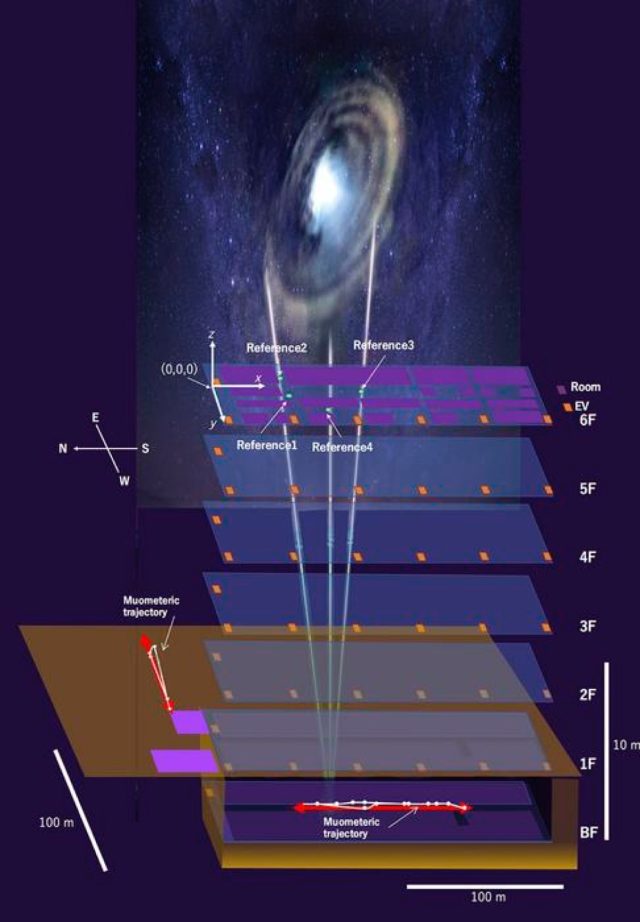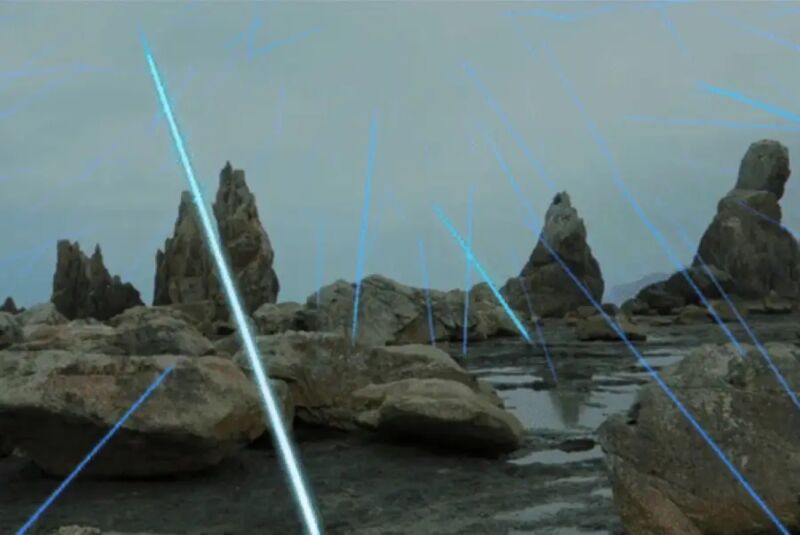2015 Hiroyuki KM Tanaka
GPS is now a mainstay of everyday life, aiding in location, navigation, tracking, mapping, and timing in many applications. But it has some drawbacks, most notably its inability to move through buildings, rocks, or water. For this reason, Japanese researchers have developed an alternative radio navigation system based not on radio waves, but on cosmic rays or muons. new message Published in the journal iScience. The team conducted its first successful test, and search and rescue teams might one day use the system, for example, to guide robots underwater or navigate autonomous vehicles underground.
“Cosmic ray muons fall evenly across the Earth and always travel at the same speed, no matter what material they pass through, even kilometers of rock.” said co-author Hiroyuki Tanaka to Muographix at the University of Tokyo, Japan. “We have now developed a new type of GPS using muons, which we have called muPS, that works underground, indoors and underwater.”
As mentioned earlier, the use of muons has a long history Image of archaeological structuresThe process becomes easier because cosmic rays provide a continuous supply of these particles. Muon is also used Chase moved illegally Monitoring nuclear material at border crossings and active volcanoes in hopes of detecting when they might explode. In 2008, scientists from the University of Texas at Austin workedAncient muon detectors have been reused to search for possible hidden Mayan ruins in Belize. Physicists at Los Alamos National Laboratory have developed portable versions of muon imaging systems to reveal the secrets of the dome structure (Il Duomo) at the top. Cathedral of Saint Mary Venus It was designed by Filippo Brunelleschi in Florence, Italy in the early 15th century.
In 2016, scientists used muon imaging Pick up the signals It points to a passage hidden behind the famous chevron blocks on its north side The Great Pyramid of Giza in Egypt. The following year, the same team discovered a mysterious void in another part of the pyramid, which they thought was a hidden chamber, which they later painted with two different paints. muon imaging situation. And just last month, scientists used muon imaging to discover a chamber previously hidden among the ruins of the ancient Neapolitan cemetery, about 10 meters (about 33 feet) below present-day Naples, Italy.
Robots and autonomous vehicles may one day be common in homes, hospitals, factories and mining operations, as well as in search and rescue missions, Tanaka says, but there is no universal navigation and location tool yet. et al. As mentioned earlier, GPS cannot penetrate underground or underwater. RFID technologies can achieve good accuracy with a small battery, but this requires a control center with servers, printers, monitors, etc. Dead reckoning suffers from chronic estimation errors and there is no outward sign of correcting it. Acoustic methods, laser scanning, and lidar also have drawbacks. So Tanaka and his colleagues turned to muons to develop their alternative system.
2023 Hiroyuki as Tanaka
Muon imaging methods usually involve gas-filled chambers. As muons slide through the gas, they collide with gas molecules and emit a flash of light (a flash), which is recorded by the detector, allowing scientists to calculate the particle’s energy and trajectory. It is similar to X-rays or ground-penetrating radar, except that higher-energy muons occur in nature rather than X-rays or radio waves. This high energy makes it possible to image dense, dense matter. The denser the particular object, the more muons are blocked. The Muographix system relies on four above-ground muon sensing reference stations that act as coordinates for muon detection receivers placed either underground or underwater.
The team conducted first try A series of muon-based underwater sensors in 2021 that will be used to detect rapidly changing tidal conditions in Tokyo Bay. Ten muon detectors have been placed in the Tokyo Bay Aqua Line’s service tunnel, which is located 45 meters (147 feet) below sea level. They were able to image the sea above the tunnel with a spatial resolution of 10 meters (about 33 feet) and a temporal resolution of 1 meter (3.3 feet), which is enough to prove that the system can detect powerful storms or tsunamis.
The set was tested in September of the same year when a typhoon from the south hit Japan, causing an ocean swell and a tsunami. Excessive amount of water slightly increased Muons disperse, and this difference is in good agreement with other measurements of ocean inflation. And last year, Tanaka’s team reported doing just that Filmed successfully A vertical profile of a tornado using X-ray imagery that shows a tornado’s cross-section and reveals variations in intensity. They discovered that the warm core has a low density, in contrast to the cold, high-pressure outer part. Combined with existing satellite tracking systems, radiography can improve hurricane predictions.

2023 Hiroyuki as Tanaka
In previous iterations of the team, the receiver was attached to the ground station by a cord, which greatly restricted movement. This new version — the Muometric Wireless Navigation System, or MuWNS — as the name suggests, is completely wireless and uses highly accurate quartz clocks to sync ground stations with the receiver. Collected reference stations and synchronized clocks allow receiver coordinates to be determined.
For the experimental operation, the ground stations were located on the sixth floor of the building, and the “navigator” carrying the receiver walked around the basement corridors. Based on the measurements obtained, the navigator’s direction was calculated and the route taken was confirmed. According to Tanaka, MuWNS performed with an accuracy of 2 to 25 meters (6.5 to 82 ft) within a range of 100 metres. “This is as good, if not better, than single-point GPS positioning over the ground in urban areas,” he said. But this is still far from practical. People need accuracy down to 1 meter, and time synchronization is key to that.”
One solution is to incorporate commercially available atomic clocks into chips that are twice as accurate as quartz clocks. But these atomic clocks are currently very expensive, though Tanaka expects costs to drop in the future as the technology is more widely integrated into cell phones. The rest of the electronics used in MuWNS are now being minimized to make it a portable device.
DOI: iScience, 2023. 10.1016/j.isci.2023.107000 (about DOIs).
The folks at Muographix have created this charming sci-fi video to explain muon-based systems.













































